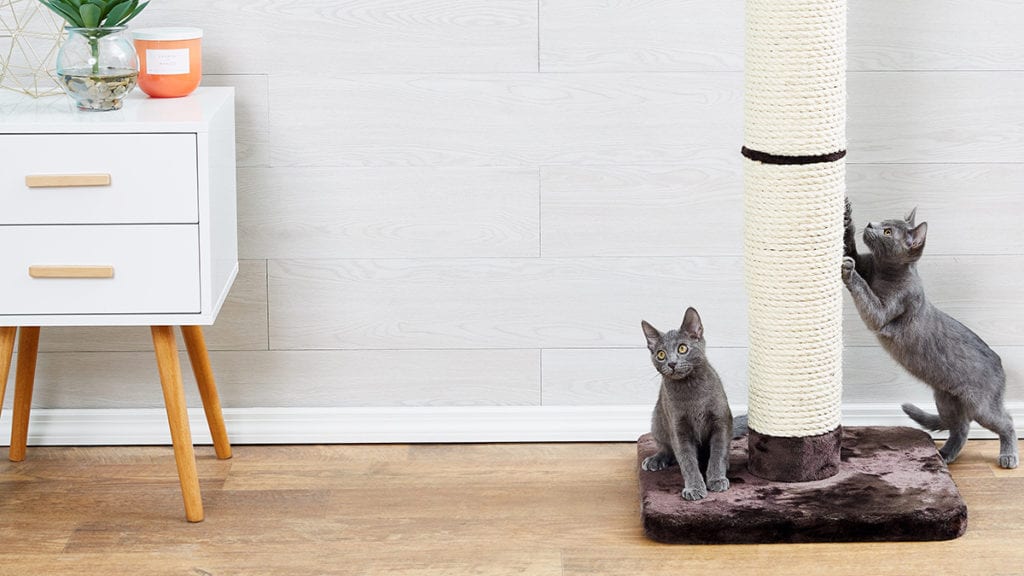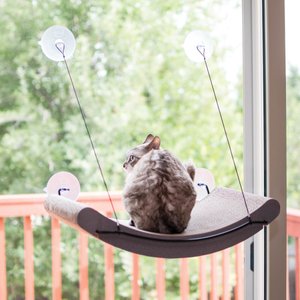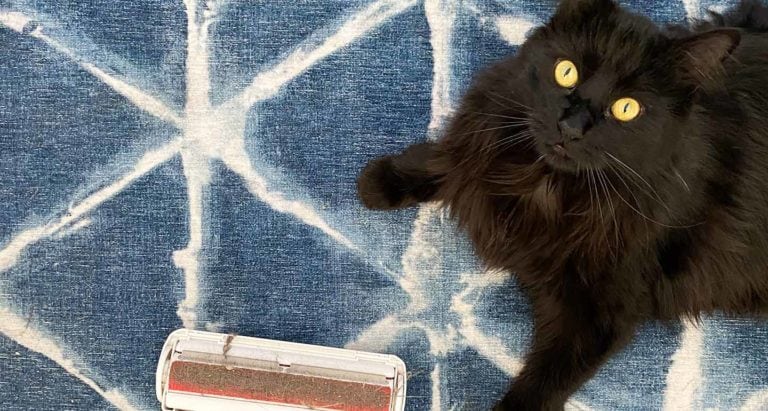Scratching is an important part of your cat’s behavior and is essential to their health and well-being. In addition to conditioning nails, “scratching is used for stretching, scent marking, visual marking and also as a displacement behavior,” says Pam Johnson-Bennett, owner of Nashville-based Cat Behavior Associates.
Your kitty needs their very own scratching area, and cat scratching posts are one option to let your cat fulfill their need to scratch.
So, how do you choose from the wide selection of scratchers on the market? Read on to learn how to pick a scratching post that will allow your feline friend to embrace their natural behavior and thrive at home.
What Materials Do Cats Prefer to Scratch?
An important feature of any cat scratcher is the type of material used.
“Cats love to scratch on stiff material they can sink their claws into,” says “Of course their natural favorite substrate is wood,” says Dr. Julia Albright, a board-certified veterinary behaviorist at the University of Tennessee, College of Veterinary Medicine in Knoxville. “Of course their natural favorite substrate is wood.”
Since you can’t just chop down a tree and put it in your living room, you can opt for the next best thing.
“In homes, we can replicate [wood] with tight-weave sisal, Berber-style carpet or cardboard scratching products,” Dr. Albright says.

Photo: Chewy.com
1
Cardboard
Cardboard cat scratchers are designed with “cardboard boxes turned on their sides, packed tightly together before being cut into manageable size,” Dr. Albright says.
They come in a variety of styles, from pads and wedges to curved cat scratcher lounges, like the Catit lounge scratcher, and even window beds, like the K&H Pet Products EZ Mount Window Scratcher Kitty Sill Cradle.
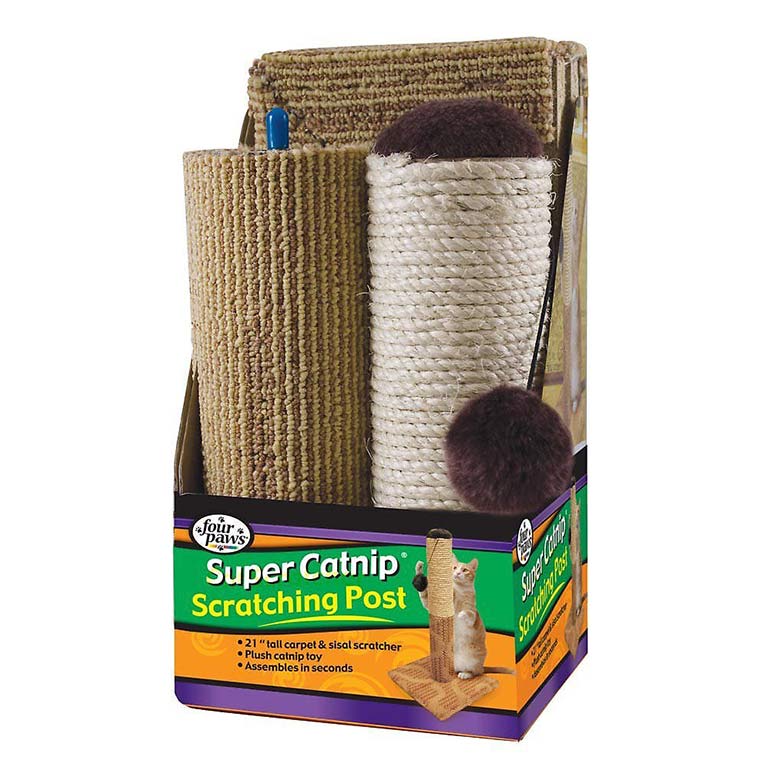
Photo: Chewy.com
2
Carpet
Some cat scratching posts and cat trees incorporate carpet. Some are all carpet, while others incorporate carpet accents, like the Four Paws cat scratching post, which has a carpet base and comes with a dangling toy stuffed with catnip. The top is made of sisal.
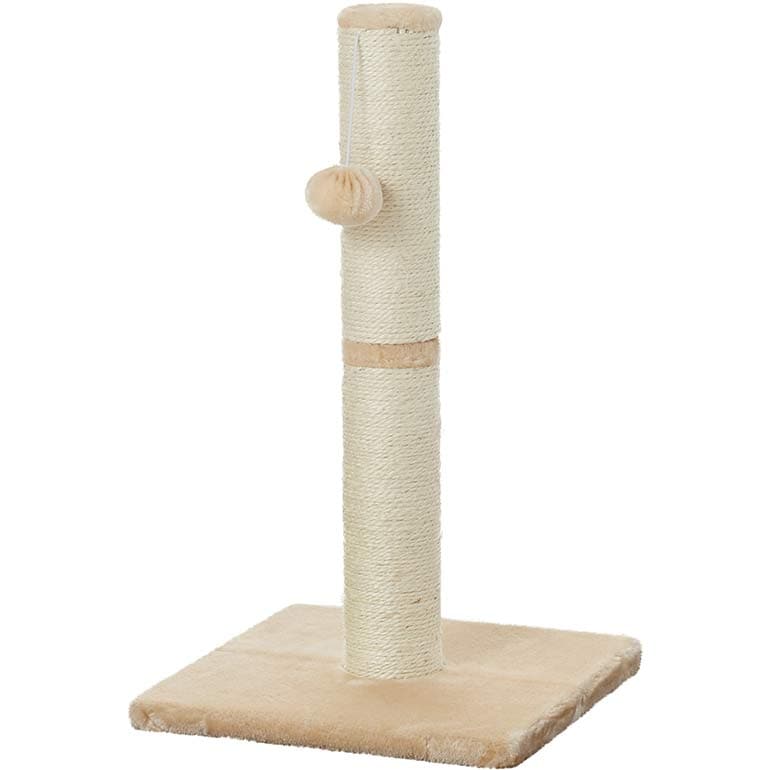
Photo: Chewy.com
3
Sisal
Another common cat scratcher material, sisal is a strong, durable fiber used to make rope, rugs and more.
“Recent data gathered via owner survey, published in the Journal of Feline Medicine and Surgery, found that, in general, cats used rope (sisal) substrate scratching posts most frequently, although carpet types were more likely to be offered,” says Dr. Lauren Demos, DVM, immediate past president and board of directors member of the American Association of Feline Practitioners. “So, there may be a bit of a disconnect in our traditional thinking of what we think cats want, and what they actually prefer, and will therefore use.”
The Frisco 21-inch Cat Scratching Post is wrapped in sisal, with a base covered in ultra-soft plush material to comfort your cat while they work their claws.
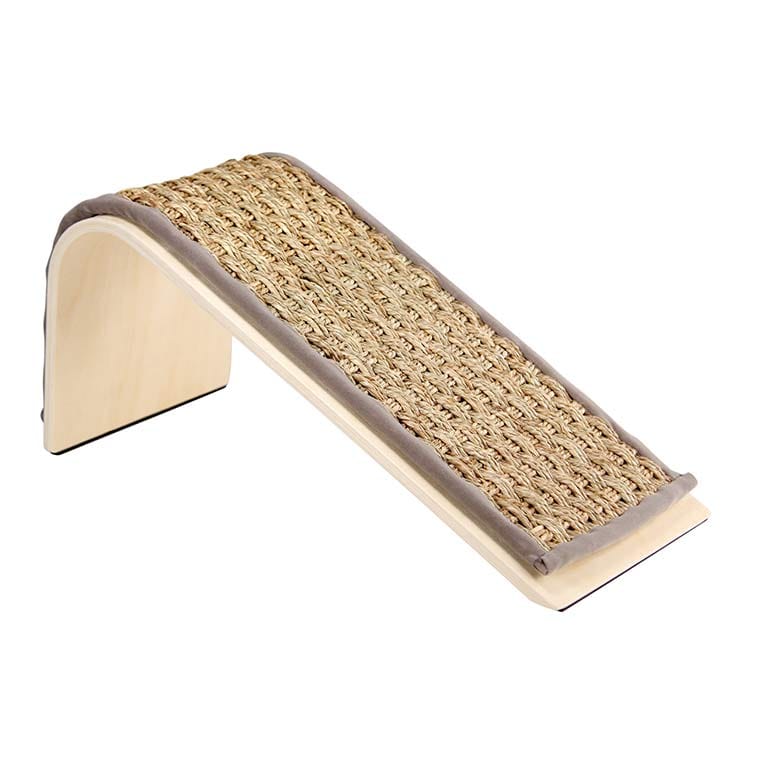
Photo: Chewy.com
4
Sea Grass
Sea grass is another material used on cat scratchers. Like sisal, sea grass is known for its durability, as well as its resistance to stains. One scratching post containing sea grass is the Petlinks Sea Ramp Seagrass Scratching Post with Catnip.
Do Cats Prefer Tall or Short Scratchers?
When choosing cat scratching posts, height is another critical feature. According to Dr. Albright, most cats like to stretch out or up while scratching, “therefore, tall or long stable scratching posts are recommended.”
The Journal of Feline Medicine and Surgery, mentioned above, published similar survey results.
“Longer posts—greater than 3 feet tall—that were positioned upright were favored by the study population,” Dr. Demos says.
You can opt for a no-frills cat tower, like the 33.5-inch Frisco scratching tower, with plenty of room to stretch and scratch, or an elaborate cat tree, like the Frisco 72-inch cat tree, which includes lookout towers, perches, hiding spots and attached toys. Whichever you choose, make sure it’s stable.
“Would you want to try and scratch something that wobbles or, even worse, tips over while you are in the process?” Dr. Demos asks.
Tall posts should have heavy, wide bases for stability, Johnson-Bennett says.
Meeting Your Cat’s Unique Needs
While insight into what the general cat population prefers in a cat scratcher is helpful, your feline companion is a unique individual with particular tastes. So how can you be sure you’re getting the right one for her?
It’s mostly a case of trial and error, says Sheena Wheeler, program coordinator for Sherwood, Oregon-based shelter, Cat Adoption Team.
“Pay attention to whether your cat is a cave dweller, a floor dweller or an up-high dweller,” she says. “Cats who like to be up high will probably prefer a tall scratching post. Cats who like to be down low, or hide away, will prefer smaller scratching posts or horizontal cardboard scratchers closer to the ground”
If you’re unsure whether your cat prefers horizontal or vertical scratchers, Johnson-Bennett says “the cats who like horizontal scratching are the ones who tend to scratch on welcome mats, rugs and the tops of sofas.”
For these felines, a cat scratch board or cat scratcher lounge, might be ideal for cats who like to be closer to the ground.
Finally, some cats enjoy incline cat scratchers, which Johnson-Bennett says are a compromise between vertical and horizontal scratchers. The SmartyKat Sisal Angle Scratcher comes with catnip to further entice cats.
Whichever scratcher you prefer, offer your cat a variety, and provide them as soon as you bring your new cat home. If you wait until your cat has start scratching the couch, it will be harder to get her to stop because she started scent marking the couch and see this piece of furniture as her marking spot, Wheeler says.
“Give them a lot of options right away, and make the couch and carpet undesirable,” she says.
Indoor-only cats need at least five or more scratchers spread through different areas of the home, Wheeler says.
“These include at least one horizontal cardboard cat scratcher, one incline cardboard scratcher, one sisal scratching post and one carpeted post (tall or short, depending on the personality of the cat),” she says. “If the cat has access to outdoors, where they can mark away on trees and the ground, they don’t need as many indoor scratching spots”
Now you’re in good shape to make informed decisions on the best cat scratching posts to meet your feline’s natural drive while protecting your home and furniture.
Share:
